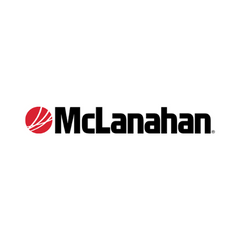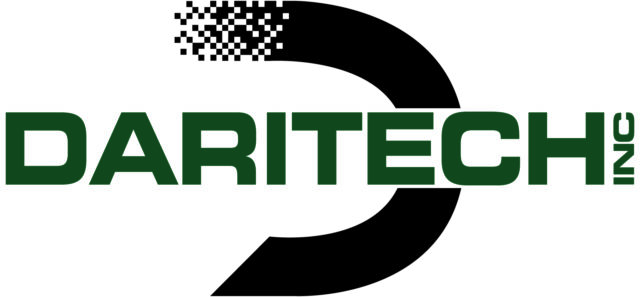Nitrate is a water-soluble form of nitrogen required for plant growth. It can become a health problem if present in high levels in groundwater. For this reason, and to save on fertilizer cost, it is desirable to keep the nitrate in the crop root zone. In contrast to rain-fed agriculture, irrigated agriculture systems can be managed to avoid conditions where nitrate leaching can occur.
To minimize nitrate leaching, knowledge of both the properties and relative leaching potential of the various forms of nitrogen and the factors required to limit water application to avoid leaching must be considered.

Nitrogen forms and availability
Nitrogen exists in many forms in excreted urine and feces, but it can be treated as two categories: organic nitrogen and inorganic nitrogen. Organic forms of nitrogen are tied to organic matter and therefore are released more slowly than the plant-available inorganic forms such as ammonium and nitrate.
About half of excreted nitrogen is in the urine – and half in the feces. Urine nitrogen is inorganic and is in the form of urea, which is readily converted to ammonia and ammonium, followed by nitrate.
Ammonia is a highly volatile form of nitrogen, easily lost to the air, particularly in warm and anaerobic conditions. Ammonium and nitrate are highly soluble in water, meaning they will move with water in the crop root zone and in surface water flow, thus easily contaminating surface and groundwater.
Most feces nitrogen is in the organic form, which is plant-available only when it breaks down (mineralizes) to form inorganic forms such as ammonium and nitrate. The availability of nitrogen in soil to which manure has been added is dependent on the rate of mineralization of organic nitrogen.
Nitrate is generally present at much higher levels than ammonium in soil with manure added. In soil where manure is added yearly, there is often a build-up of nitrogen, so in the fall when the crops are harvested, there is still significant inorganic nitrogen available in the soil.
This nitrogen is then available for leaching into surface and groundwater as winter precipitation occurs. This can be prevented by accounting for all sources of nitrogen, including mineralization, and only applying the actual nitrogen needed.
Loss of nitrogen as ammonia to volatilization can be minimized by quickly incorporating applied manure into the soil, applying when temperatures are below 60°F and keeping liquid forms of manure aerated to reduce the formation of ammonia.
Loss of nitrate can be minimized by not overirrigating and by rapidly incorporating nitrogen into the soil. Significant nitrogen is present in manure in organic forms and can be made available for either plant use or leaching over time.
Soil considerations
The layer of soil where crop roots are present can be visualized as a sponge. It can hold a certain amount of water, but if more water is added to a full sponge, the excess drips out the bottom.
In soil, water added beyond what the soil can hold will move deeper, carrying soluble nitrate with it. Over time, this higher-nitrate water can move down to the groundwater, where it becomes a health risk.
The amount of water that can be held in the crop root zone depends on the depth of crop rooting and on soil properties, which determine the amount of water that can be held per foot of soil depth.
In general, sandy soils can hold about 1 inch of water per foot, sandy loams about 1.6, silt loams about 2 to 2.4 and clay loams about 2.2 inches per foot. If the root zone starts out full, water needs to be added only to replace the water used by the crop between irrigations.
Determining how often to irrigate and how much to add per irrigation can be done using a variety of irrigation scheduling methods; some methods can be found on the University of Idaho drought website.
The goal of all of these methods is to irrigate frequently enough to avoid crop water stress while applying water in a manner to avoid downward movement of nitrogen below the crop roots.
Because root depth of annual crops is small, and because even in a mature crop about 70 percent of the water (and nitrogen) uptake is from the top half of the crop rooting depth, it is important to limit water application to minimize downward movement of water and nutrients.
This usually requires small but frequent irrigations when the crop is young and less frequent, but larger irrigations as the crop roots develop.
Times when nitrogen leaching is most likely
Because nitrogen in the form of nitrate or ammonium is water-soluble, the times of the year when leaching is most likely are those where significant nitrogen is present in the soil and precipitation or overwatering is more likely.
In general, this would be early season, when a large single application of nitrogen from manure or commercial fertilizer occurs and irrigation water can be added at a higher rate than crop water use.
The other significant time would be in the fall if high levels of nitrogen are present in the soil due to mineralization of organic matter during the growing season and addition of commercial fertilizer in the spring was not adjusted to account for mineralized nitrogen.
When a high level of nitrogen is present in the fall, significant losses to deep leaching can occur due to fall and winter precipitation. In some climates, precipitation great enough to cause deep leaching does not occur every year, but it is always a risk.
Best management practices (BMPs) to minimize nitrogen leaching
The following suggestions apply in most cases; for a more detailed discussion of when and how to use them, sources such as university extension bulletins or other technical information should be used. Generally useful BMPs include:
- Soil-test to determine spring levels of nitrogen with depth in the crop root zone.
- Determine actual nitrogen required for a reasonable crop yield goal from university or other sources.
- Consider nitrogen (as nitrate and ammonium) in any manure applied for early season fertility management.
- Consider mid-season and late-season nitrogen that will be available by mineralization in adjusting commercial fertilizer application.
- Water to only wet the top 6 to 12 inches of soil early in the season when the crop roots are shallow.
- Later, match water applied to water used (unless the root zone needs to be filled before mid-season for center-pivot irrigation).
- Sample soil for moisture content to depth of rooting or a little deeper to assure minimal excess irrigation.
- Manage nitrogen to meet crop needs but not leave excess in the soil in the fall if no crop will be present until spring.
The bottom line
Manure is a nutrient resource of high value that should be managed to minimize nutrient losses. Nitrogen is expensive. Losses to deep percolation require the addition of more nitrogen for adequate crop growth.
Management of nitrogen and water to minimize deep percolation losses thus offers a financial advantage while protecting the local groundwater so people and animals in the area can safely drink. PD
Marcha Neibling is owner at Neibling Environmental Consulting. Email Marsha Neibling.
Photo:Photo courtesy of Darren Olsen.




